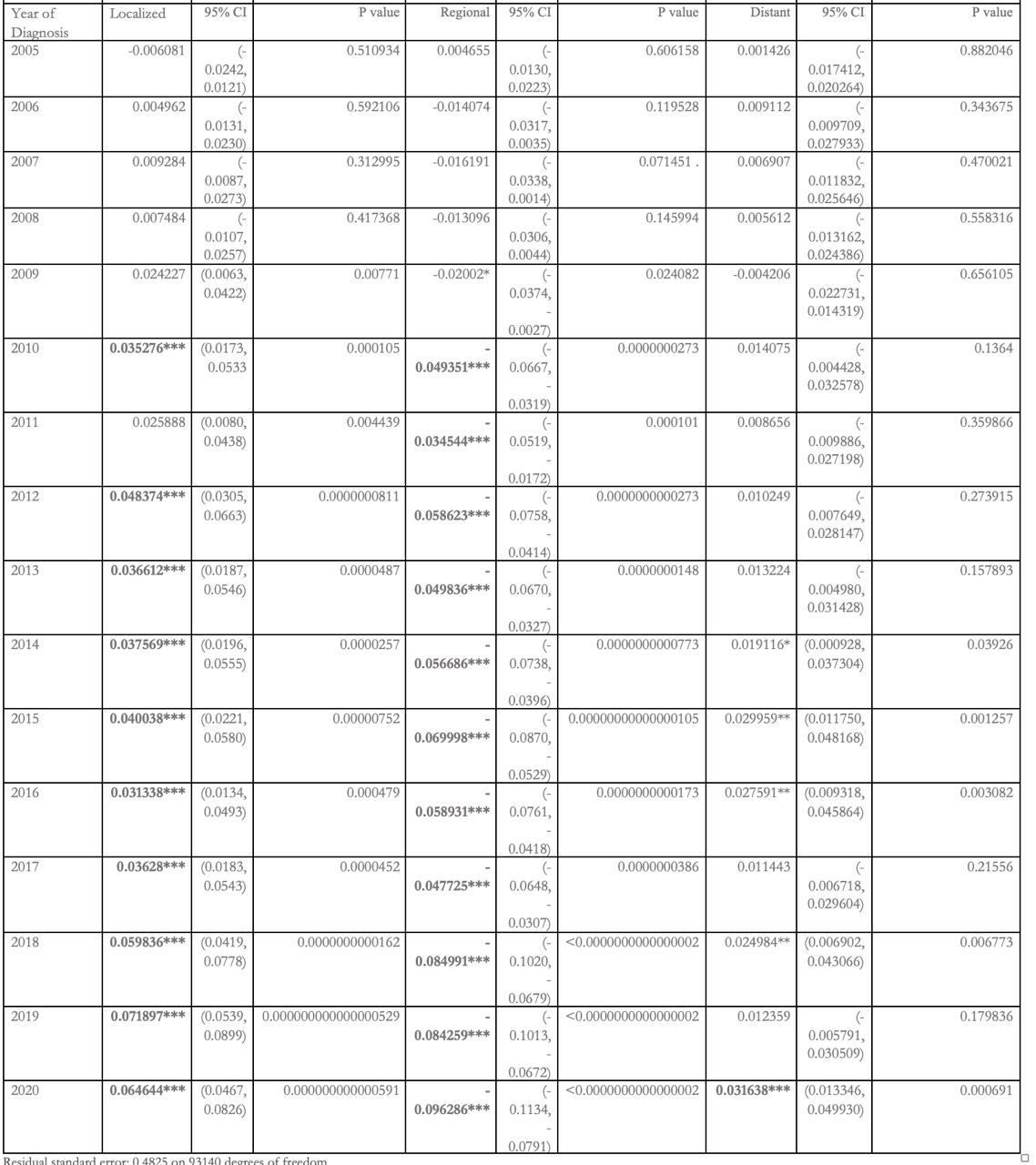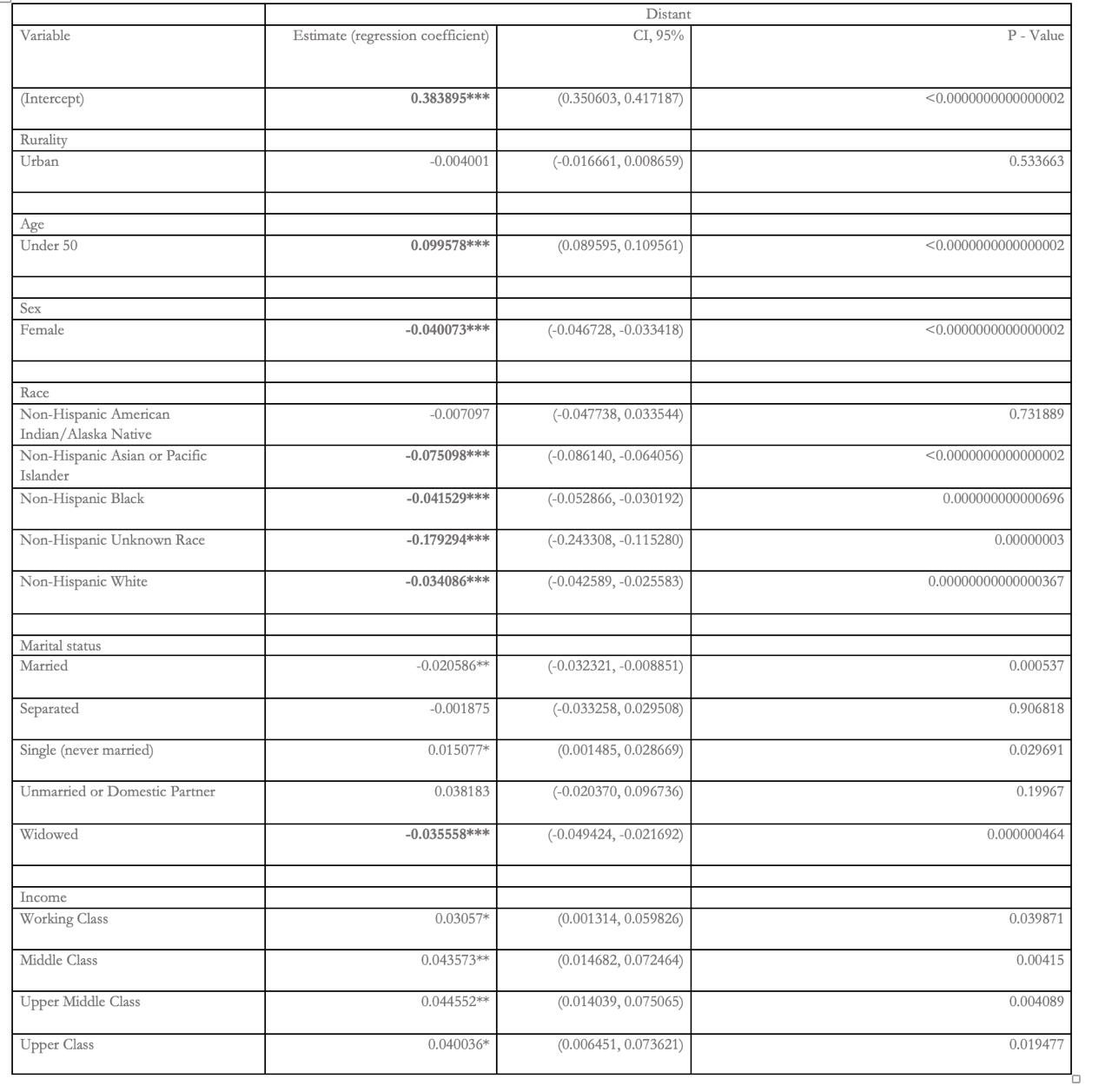Sunday Poster Session
Category: Stomach and Spleen
P2031 - Sociodemographic Determinants of Gastric Cancer Stage at Diagnosis: A SEER-Based Analysis
Sunday, October 26, 2025
3:30 PM - 7:00 PM PDT
Location: Exhibit Hall

Eunice Aregbesola, MD (she/her/hers)
University of Missouri Health Care
\, MO
Presenting Author(s)
Eunice Aregbesola, MD1, Ooreoluwa Fasola, MD2, Chiamaka Nwachukwu, MD3, Eunice Omeludike, MD4
1University of Missouri Health Care, Columbia, MO; 2Texas Tech University Health Sciences Center - Permian Basin, Odessa, TX; 3Tulane Medical Center, New Orleans, LA; 4Piedmont Athens Regional Medical Centre, Athens, GA
Introduction: Gastric cancer remains a leading cause of cancer-related deaths worldwide, with various factors influencing its prognosis and stage at diagnosis. Understanding the factors associated with different stages of gastric cancer can provide valuable insights for early diagnosis and targeted interventions. This study aimed to investigate the relationships between rurality and the regional and distant stages of gastric cancer.
Methods: Data from the SEER Research Data, 17 Registries, Nov 2023 Sub (2000-2021) was used, which includes information on 124357 gastric cancer patients. The dataset was analysed using logistic regression models to assess the association of several variables—age, sex, race, marital status, income group, rurality, and year of diagnosis—with the likelihood of presenting at regional or distant stages of gastric cancer. The regional and distant stages were modeled as binary outcomes, with all covariates treated as fixed effects.
Results: A logistic regression analysis of regional stage cancer revealed significant associations with factors such as age, sex, race, marital status, income group, rurality, and year of diagnosis. Patients under 50 and females were less likely to present with regional stage cancer (β = -0.033, p < 0.01; β = -0.043, p < 0.001, respectively). Racial disparities showed that non-Hispanic Asians or Pacific Islanders and non-Hispanic Blacks had lower odds of this stage (p = 0.001 and p = 0.02, respectively). Higher income groups also had increased odds of distant stage cancer (p = 0.004). Similar trends were observed for distant stage cancer, with younger age, female sex, and certain racial groups (e.g., non-Hispanic Asians or Pacific Islanders) showing decreased odds. Additionally, diagnoses from 2010 to 2020 indicated a rising trend toward distant stage diagnoses, suggesting a shift in the stage at diagnosis over time.
Discussion: Findings reveal significant associations between patient characteristics, including age, sex, race, marital status, income group, and year of diagnosis, and the likelihood of being diagnosed with regional or distant-stage gastric cancer. However, rurality did not emerge as a significant factor in determining the stage of diagnosis for gastric cancer. These results underscore the importance of demographic and socioeconomic factors in understanding gastric cancer diagnosis patterns.

Figure: figure 1

Figure: Figure 2
Disclosures:
Eunice Aregbesola indicated no relevant financial relationships.
Ooreoluwa Fasola indicated no relevant financial relationships.
Chiamaka Nwachukwu indicated no relevant financial relationships.
Eunice Omeludike indicated no relevant financial relationships.
Eunice Aregbesola, MD1, Ooreoluwa Fasola, MD2, Chiamaka Nwachukwu, MD3, Eunice Omeludike, MD4. P2031 - Sociodemographic Determinants of Gastric Cancer Stage at Diagnosis: A SEER-Based Analysis, ACG 2025 Annual Scientific Meeting Abstracts. Phoenix, AZ: American College of Gastroenterology.
1University of Missouri Health Care, Columbia, MO; 2Texas Tech University Health Sciences Center - Permian Basin, Odessa, TX; 3Tulane Medical Center, New Orleans, LA; 4Piedmont Athens Regional Medical Centre, Athens, GA
Introduction: Gastric cancer remains a leading cause of cancer-related deaths worldwide, with various factors influencing its prognosis and stage at diagnosis. Understanding the factors associated with different stages of gastric cancer can provide valuable insights for early diagnosis and targeted interventions. This study aimed to investigate the relationships between rurality and the regional and distant stages of gastric cancer.
Methods: Data from the SEER Research Data, 17 Registries, Nov 2023 Sub (2000-2021) was used, which includes information on 124357 gastric cancer patients. The dataset was analysed using logistic regression models to assess the association of several variables—age, sex, race, marital status, income group, rurality, and year of diagnosis—with the likelihood of presenting at regional or distant stages of gastric cancer. The regional and distant stages were modeled as binary outcomes, with all covariates treated as fixed effects.
Results: A logistic regression analysis of regional stage cancer revealed significant associations with factors such as age, sex, race, marital status, income group, rurality, and year of diagnosis. Patients under 50 and females were less likely to present with regional stage cancer (β = -0.033, p < 0.01; β = -0.043, p < 0.001, respectively). Racial disparities showed that non-Hispanic Asians or Pacific Islanders and non-Hispanic Blacks had lower odds of this stage (p = 0.001 and p = 0.02, respectively). Higher income groups also had increased odds of distant stage cancer (p = 0.004). Similar trends were observed for distant stage cancer, with younger age, female sex, and certain racial groups (e.g., non-Hispanic Asians or Pacific Islanders) showing decreased odds. Additionally, diagnoses from 2010 to 2020 indicated a rising trend toward distant stage diagnoses, suggesting a shift in the stage at diagnosis over time.
Discussion: Findings reveal significant associations between patient characteristics, including age, sex, race, marital status, income group, and year of diagnosis, and the likelihood of being diagnosed with regional or distant-stage gastric cancer. However, rurality did not emerge as a significant factor in determining the stage of diagnosis for gastric cancer. These results underscore the importance of demographic and socioeconomic factors in understanding gastric cancer diagnosis patterns.

Figure: figure 1

Figure: Figure 2
Disclosures:
Eunice Aregbesola indicated no relevant financial relationships.
Ooreoluwa Fasola indicated no relevant financial relationships.
Chiamaka Nwachukwu indicated no relevant financial relationships.
Eunice Omeludike indicated no relevant financial relationships.
Eunice Aregbesola, MD1, Ooreoluwa Fasola, MD2, Chiamaka Nwachukwu, MD3, Eunice Omeludike, MD4. P2031 - Sociodemographic Determinants of Gastric Cancer Stage at Diagnosis: A SEER-Based Analysis, ACG 2025 Annual Scientific Meeting Abstracts. Phoenix, AZ: American College of Gastroenterology.
